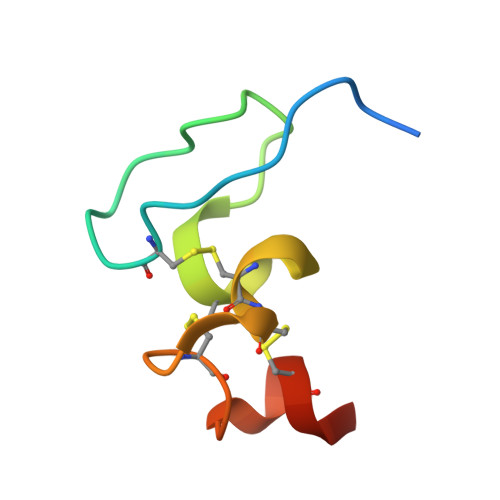Teneurin4 dimer structures reveal a calcium-stabilized compact conformation supporting homomeric trans-interactions.
Meijer, D.H., Frias, C.P., Beugelink, J.W., Deurloo, Y.N., Janssen, B.J.C.(2022) EMBO J 41: e107505-e107505
- PubMed: 35099835
- DOI: https://doi.org/10.15252/embj.2020107505
- Primary Citation of Related Structures:
7BAM, 7BAN, 7BAO, 7PLP - PubMed Abstract:
Establishment of correct synaptic connections is a crucial step during neural circuitry formation. The Teneurin family of neuronal transmembrane proteins promotes cell-cell adhesion via homophilic and heterophilic interactions, and is required for synaptic partner matching in the visual and hippocampal systems in vertebrates. It remains unclear how individual Teneurins form macromolecular cis- and trans-synaptic protein complexes. Here, we present a 2.7 Å cryo-EM structure of the dimeric ectodomain of human Teneurin4. The structure reveals a compact conformation of the dimer, stabilized by interactions mediated by the C-rich, YD-shell, and ABD domains. A 1.5 Å crystal structure of the C-rich domain shows three conserved calcium binding sites, and thermal unfolding assays and SAXS-based rigid-body modeling demonstrate that the compactness and stability of Teneurin4 dimers are calcium-dependent. Teneurin4 dimers form a more extended conformation in conditions that lack calcium. Cellular assays reveal that the compact cis-dimer is compatible with homomeric trans-interactions. Together, these findings support a role for teneurins as a scaffold for macromolecular complex assembly and the establishment of cis- and trans-synaptic interactions to construct functional neuronal circuits.
Organizational Affiliation:
Department of Bionanoscience, Kavli Institute of Nanoscience, Delft University of Technology, Delft, The Netherlands.


















